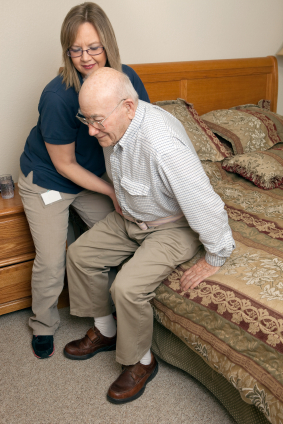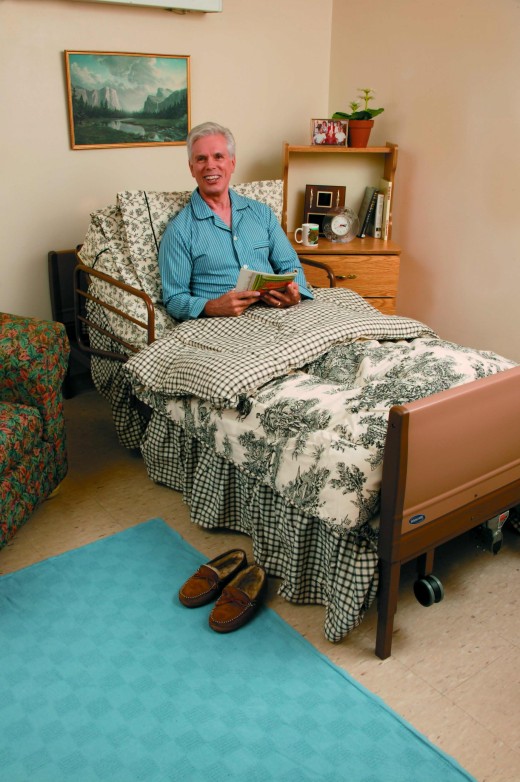 There are risks involved in moving patients in the home when an assistive device is not used. An overexerted caregiver could accidentally injure themselves or harm the patient. The patient may be injury by being dropped, jarred or not properly handled during transfers that are unassisted by a device.
There are risks involved in moving patients in the home when an assistive device is not used. An overexerted caregiver could accidentally injure themselves or harm the patient. The patient may be injury by being dropped, jarred or not properly handled during transfers that are unassisted by a device.
Traditional floor-based lifts typically require multiple caregivers for transfers in the home. They have a higher risk of tipping and can be difficult to move and adjust due to floor coverings or furniture within the room. Heavier and larger patients can make these types of lift even more difficult for caregivers to move and adjust.
Anyone who lifts and moves patients are at a high risk for back injury and other musculoskeletal disorders. Injuries are due in a large part to the overexertion associated with lifting, transferring and repositioning patients manually. Safe Patient Handling has been associated with fewer injuries and decreasing severity of injuries.
 Studies have shown that patients feel more comfortable and secure when ua mechanical transfer device is used. It has been found that using mechanical devices to transfer patients takes fewer personnel and less time than manual transfers.
Studies have shown that patients feel more comfortable and secure when ua mechanical transfer device is used. It has been found that using mechanical devices to transfer patients takes fewer personnel and less time than manual transfers.
Patients and family caregivers may be unwilling or unable to accept changes in the home. They may fear that an assistive device will be unsafe or uncomfortable. In reality, assistive devices actually increase patient safety and comfort while enhancing the patient’s sense of dignity. Assistive devices also protect caregivers from injury while increasing their efficiency.
The Titan 500 is a freestanding overhead patient lift designed for the home and the family caregiver. It allows a single caregiver, often a family member, to safely transfer a loved one in the home without injury.

Proudly Made in the USA, the Titan 500 is a complete lift system that includes a free sling and free shipping. It does not attach to the structure of the home and can follow the patient as they move through the continuum of care. It is simple and safe to use and features a rechargeable electric lift motor.
For more information, visit our website, find us on Facebook and watch our YouTube channel.
###
